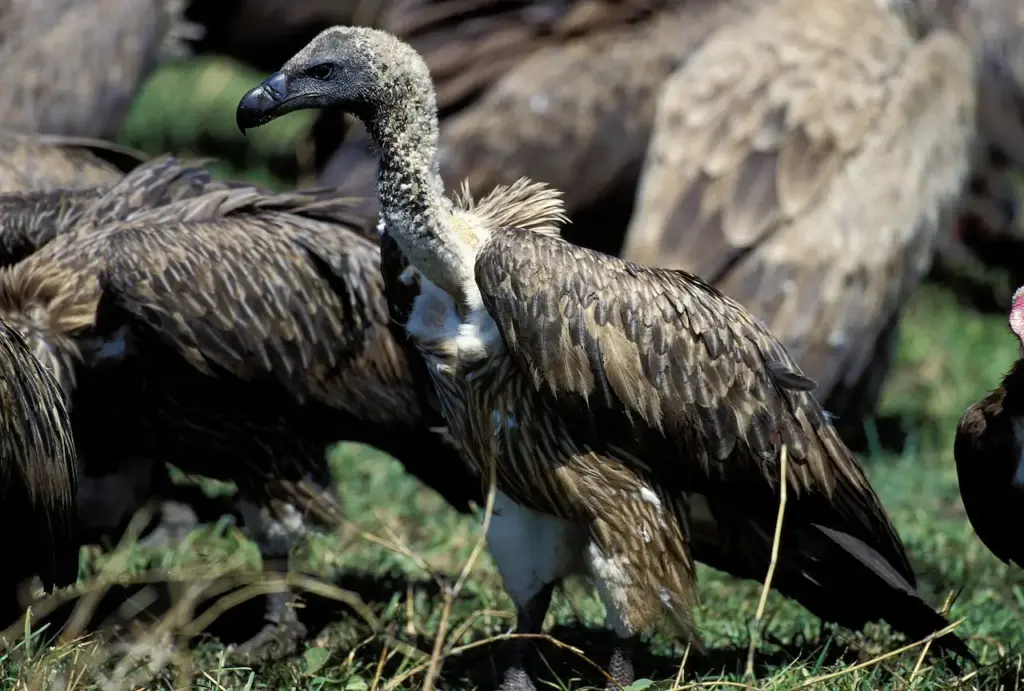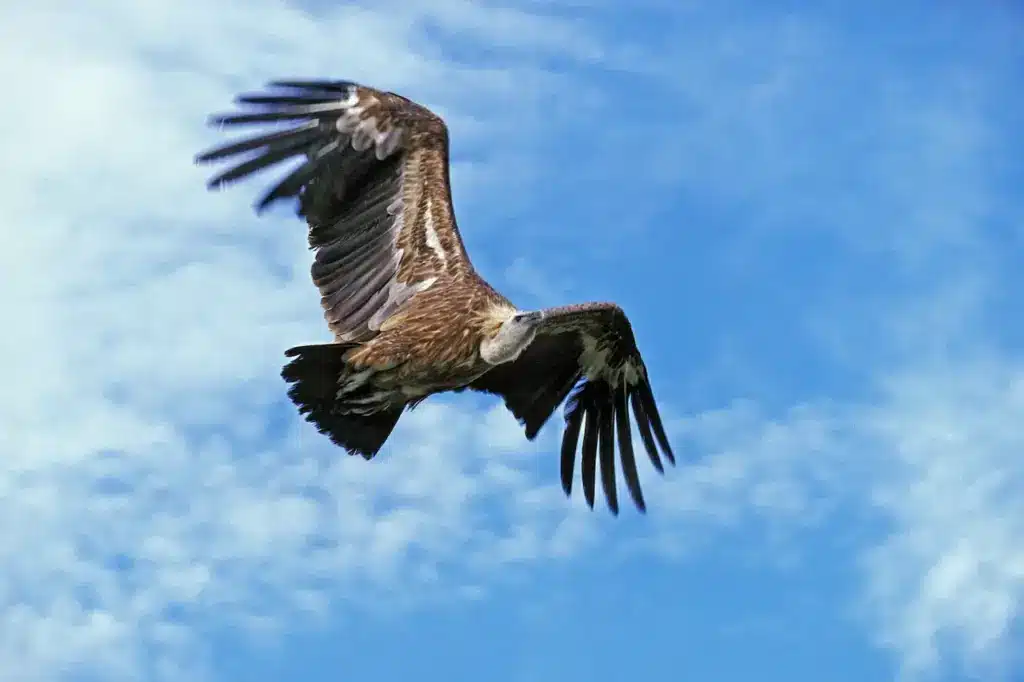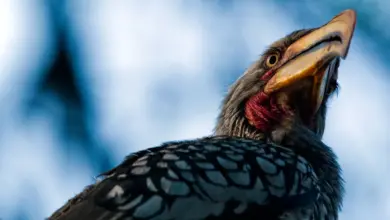Rüppell’s Vultures (Gyps rueppellii)
Rüppell’s Vultures (Gyps rueppellii) is a large vulture that ranges across much of central Africa, including Ethiopia, the Sudan, Tanzania and Guinea. It is also known as Rüppell’s Griffon, Rueppell’s Vulture, Rüppell’s Griffin Vulture, and similar variants, and is named in honor of the 19th-century German explorer, collector and zoologist Eduard Rüppell.

The Rüppell’s Vultures also holds the record as the highest-flying bird — a Ruppell’s Vulture was sucked into a jet engine 37,730 feet above sea level.
Description
Adults are close to a metre (3 ft) in length, with a wingspan of around 2.6 m (8.6 ft), and a weight that usually ranges between 7 and 9 kg (15€“20 lb).
Both sexes are alike: mottled brown or black overall with a whitish-brown underbelly and thin, dirty-white fluff covering the head and neck. The base of the neck has a white collar, the eye is yellow or amber, the crop patch deep chocolate-brown.
Calls / Vocalizations
Silent as a rule, they become vocal at the nest and when at a carcass, squealing a great deal.
Ecology
Rüppell’s Vultures are highly social, roosting, nesting, and gathering to feed in large flocks.
They can travel fast at need, cruising at up to 35 km/h, and will fly as far as 150 km from a nest site to find food. They can reach great heights, 6,000 m (20,000 ft) is not uncommon, and on one exceptional occasion, an aircraft over the Côte d’Ivoire collided with a Rüppell’s Vulture at the astonishing altitude of 11,300 m (37,000 ft), the current record avian height.
They have a specialized variant of the hemoglobin alpha D subunit; this protein has a high affinity for oxygen, which allows the species to take up oxygen efficiently despite the low partial pressure in the upper troposphere.
They are creatures of the more arid and mountainous areas of Africa: particularly semi-desert and the fringes of deserts. They roost on inaccessible rock ledges if these are available, or in trees, usually Acacia.
When thermal updrafts start to develop enough lift, about two hours after sunrise Rüppell’s Vultures leave the roost and begin to patrol over the plains, using their exceptionally keen eyesight to find large animal carcasses, or carnivores that have made a kill.

They will wait, several days if necessary, until a carnivore leaves a carcass. They have been known to take live prey on occasion, but this is rare.
Diet / Feeding
Rüppell’s Vultures have several adaptations to their diet and are specialized feeders even among the Old World vultures of Africa. They have an especially powerful bill and, after the most attractive soft parts of a carcass have been consumed, they will continue with the hide, and even the bones, gorging themselves until they can barely fly. They have backward-facing splines on the tongue to help remove meat from bone.
Status
Rarer than previously believed, Rüppell’s Vulture is uplisted from a species of Least Concern to Near Threatened in the 2007 IUCN Red List.




